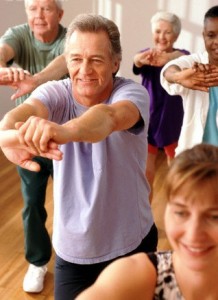Staying physically active is a cornerstone of healthy aging. As we grow older, our bodies and health needs change, making it crucial to adapt our exercise routines accordingly. This comprehensive guide offers insights into the types of exercises and exercise tips which is beneficial for older adults, with a special focus on in-home elder care, ensuring safety and effectiveness in maintaining physical health.
The Importance of Exercise for Older Adults
Regular physical activity is vital for older adults, helping to prevent diseases like cardiovascular disease and diabetes. It also plays a key role in maintaining mobility, flexibility, and mental well-being. However, starting or maintaining an exercise routine can be challenging, especially when dealing with age-related conditions or mobility limitations.
Types of Exercises for Older Adults
- Endurance Activities: These are aerobic exercises that improve heart health and circulation. Activities like brisk walking, swimming, and cycling are excellent choices. They not only help in lowering blood pressure but also enhance overall stamina.
- Strength Training: Building muscle mass is crucial to counteract age-related muscle loss. Simple weight-lifting exercises, using resistance bands, or body-weight exercises like squats and push-ups can be effective.
- Flexibility Exercises: Maintaining flexibility is essential for preventing injuries and keeping the body agile. Stretching exercises or practices like yoga can significantly improve flexibility and joint health.
- Balance Exercises: With age, balance can deteriorate, increasing the risk of falls. Exercises that improve balance, such as Tai Chi or simple balance-focused movements, are highly beneficial.
Incorporating Exercise into In-Home Elder Care
For older adults receiving in-home care, incorporating exercise into their daily routine is essential. Caregivers can play a significant role in facilitating safe and effective exercises. Here are some tips:
- Personalized Exercise Plans: Tailor exercise routines to the individual’s health conditions and mobility levels. Consult with healthcare providers to create a safe and effective exercise plan.
- Safe Environment: Ensure the exercise area is free from hazards. Use non-slip mats and have sturdy furniture nearby for support.
- Monitoring Progress: Keep track of the exercises performed and the individual’s response to them. Adjust the routine as needed for comfort and effectiveness.
Overcoming Barriers to Exercise
Older adults often face barriers to exercise, such as fear of injury, lack of motivation, or physical limitations. Overcoming these barriers is key to maintaining an active lifestyle.
- Start Slowly: Begin with low-intensity exercises and gradually increase the duration and intensity.
- Find Enjoyable Activities: Choose exercises that are enjoyable to increase motivation. Activities like dancing, gardening, or walking with friends can be both fun and beneficial.
- Addressing Physical Limitations: For those with mobility issues, seated exercises or water aerobics can be excellent alternatives.
The Role of Technology in Elder Fitness
Technology can be a valuable tool in promoting physical activity among older adults. Fitness trackers can monitor activity levels, while online exercise programs can provide guided workouts tailored to seniors.
Staying Motivated
Staying motivated is crucial for continuing an exercise regimen. Setting achievable goals, tracking progress, and having a support system can all contribute to sustained motivation.
The Mental Health Benefits
Exercise is not just about physical health; it also has significant mental health benefits. Regular physical activity can reduce the risk of depression, improve sleep quality, and enhance cognitive function.
Conclusion
Incorporating regular exercise into the daily routine of older adults, especially those in in-home elder care, is vital for maintaining health and independence. With the right approach and support, older adults can enjoy the numerous benefits of physical activity, leading to a more fulfilling and healthier life.



